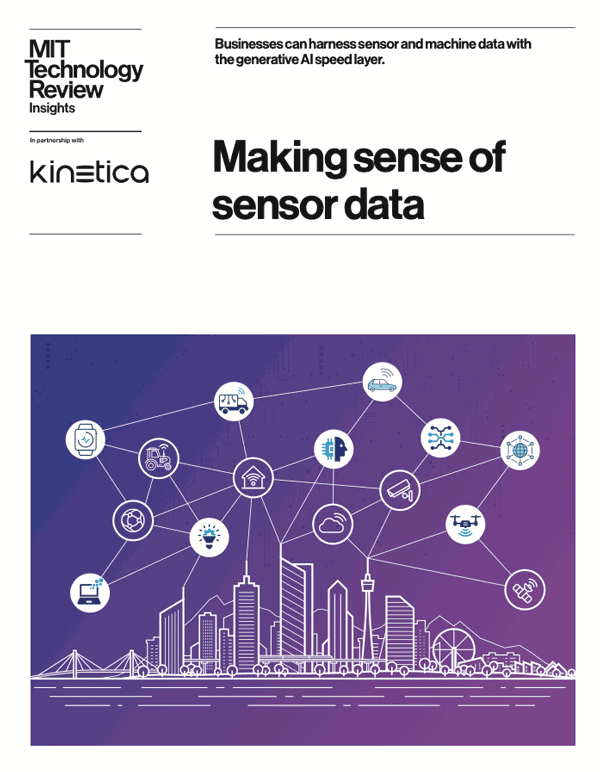Applying Active Analytics To Dynamic Replenishment
As we reach a point where every business is responsible not just for what they produce or the services they provide, but also for the effectiveness of their data analysis, it’s essential to understand the active analytics process. Combining continuous analysis of streaming and historical data, location analysis, and predictive analytics using AI and machine learning, a business can analyze and react to data simultaneously, in real time. It’s imperative because the business models that can cut it in today’s competitive market are not the ones with the best products or the most effective services; instead, they’re the ones that are most responsive to data.

It’s easy to relegate the practical applications of active analytics to AVs or the IoT. But active analytics is reshaping every industry behind the scenes.
Take inventory management, for example. Deloitte finds that a ten percent reduction in days-on-hand could lead to more than $100 billion in savings and a 14 to 16% reduction in inventory levels. Let’s dig into the ways active analytics is reshaping inventory management through dynamic replenishment.
How Inventory Replenishment Works Today
Inventory changes every time an item is purchased or ships. It changes all the time. But the norm for responding with replenishment is to use a batch process that updates inventory information at the end of the day, or, in a best-case scenario, a couple times a day. Can’t we just respond in real-time, instead?
Unfortunately, there are serious data challenges involved in responding in real-time. You need to take the location of stores as well as delivery trucks and warehouses into account simultaneously. You need to know the relationships between different types of inventory. You need to be able to cope with the sheer volume of data that flows in. And you need to analyze—and respond to—streaming data in the moment.
To compound it all, if you were to try to tackle each of these challenges individually, the resulting solutions would almost certainly not function well together. You can’t have a hodgepodge of machine learning solutions, streaming solutions, and location solutions. You need it all to work together by design.
An active analytics approach marries streaming data analysis, location analysis, and machine learning in a single, unified solution.
Solutions to Inventory Replenishment Challenges
Streaming Data Analysis:
Large retailers have everything on the line when it comes to whether they can make use of their streaming data. Over $15k is spent at Walmart every second — a daily snapshot is nowhere close to an accurate picture. When supply chains operate 24/7, data-driven decisions need to keep pace. Latency has a real impact on revenue. The longer it takes to identify gaps, the more gaps in what you can sell, and the more value that’s lost.
The sheer volume of streaming data retailers possess is an obvious hurdle, but GPU-enhanced analytics platforms move workloads from daily to real-time through distributed parallel processing capabilities. One retailer uses Kinetica to do this, processing over 250 million messages a day to optimize inventory and avoid out-of-stock situations.
Location Intelligence:
Location intelligence is especially taxing on legacy data solutions, but retailers’ logistical optimization is particularly dependent on geospatial processing. Supply chains are a complex network of stores, warehouses, and trucks in constant motion — even the location of individual items is crucial to stock decisions.
As retailers move from passive to active analytics, they’ll need to determine optimal routes in real-time and perform shortest-point analysis on the fly. Platforms utilizing GPUs are uniquely suited to geospatial-intensive workloads as they can spread spatial computations across GPUs’ thousands of cores to provide the type of brute-force power required.
Machine Learning:
Of course, optimum value creation occurs not only when data workloads become real time, but also when retailers can run predictive analytics efficiently, at scale. The ideal is to identify potential shortages before they occur, and find new ways to organize inventory to optimize sales opportunities.
A successful active analytics solution lets retailers bring machine learning models and embed them into their analytics workflows, streamlining powerful predictive analytics directly into business processes.
It is no secret that retail will be either revolutionized or retired by the digital era. Digitization does not mean it must be left behind. By embracing the transition from passive to active analytics, retailers can capture and create value that they’re currently missing out on. A unified solution delivering streaming data analysis, location intelligence, and machine learning offers a scalable and repeatable model that democratizes dynamic replenishment for all companies, regardless of size or market-share. Innovative solutions don’t have to be the privilege of only the largest, cash-rich retailers on the planet anymore, capable of building out custom solutions. Active analytics, available as a unified platform, is accessible to all retailers ready to respond and react to their data in real-time.
This article was previously published on Forbes.
Making Sense of Sensor Data

